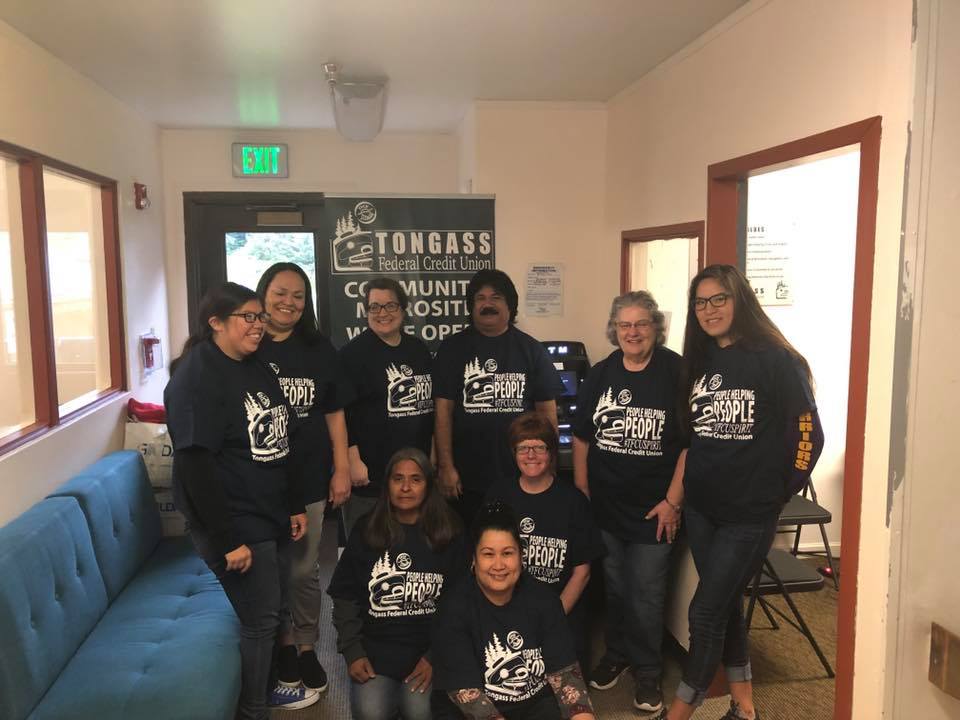On September 3rd, South Division Credit Union’s merger with Scott Credit Union was completed. In this time of political and ethical disorder, this combination raises a critical issue for the future of the cooperative system.
I described the unusual circumstances of South Division’s merger in an August 13 post, Can’t We Do Better Than this?
The credit union’s commitment to its members was clear on the website:
Once a Member, Always a Member
Membership with SDCU is on your terms. No matter where you move or how your life changes, you can maintain Membership with us. And when those life-altering moments do occur, SDCU assures you that we will be there to offer support and personalized financial services to suit all of your needs.
Our commitment to you is the driving force behind our credit union, because your life is our priority.
But the July 14, 2021 Special Meeting Notice from the CEO and seven directors recommending merger, paint a very different picture as follows:
South Division Credit Union has not grown in size or membership participation for several years and has been faced with increasing operational, regulatory and compliance expenses; lack of managerial expertise, aging Board of Directors and no effective succession plans.
Multiple facts support this self-confessed failure. Membership has fallen from 6,724 at December 2016 to 5,287 at June 2021. Net worth has almost been cut in half, from 14% at yearend 2019, to 7.47 at this midyear.
This capital decline was due to operating losses of $1.995 million in 2020 and another $252,211 for the first six months of 2021.
Full time equivalent employees have been reduced from 26 to 17. Total member loan balances have fallen by $2.5 million or 15% over the past twelve months. Top line total revenue has decreased year over year since 2016, and by 14% in the first six months of 2021 versus comparable period of 2020.
An Abandoned Ship?
Members and employees both appear to be fleeing a leaking if not sinking ship. However, during these years of declines, the CEO was garnering significant recognition from the credit union system.
At the merger date, the CEO had been in place since 1987, or 35 years. A July 2013 Illinois Business Journal profile listed her many career involvements including :
- Director of the ICUL board since 2003
- Chairman of ICUL in 2014
- President of two credit union chapters
- 30 Year Member of CUES and Illinois CUES Council Chair
- 30 Year Member of the IL Political Action Council and past chair
- Service on Cuna’s Governmental Affairs Committee
- Three years on CUNA’s state government subcommittee
- Internationally, a member of the World Council of Credit Unions for 25 years and a founding member of the Women’s Global Leadership network.
The article also enumerated more than a dozen local charities, school and educational involvements plus multiple civic engagements by the CEO.
The awards granted to the CEO in just the past decade include:
- The Evergreen Park Chamber of Commerce “Business Person” of the Year for 2011
- Induction into the Illinois credit Union Hall of Fame-April 2017
- The Credit Union House Hall of Leaders Recognition at Capitol Hill-March 2018: “a distinguished group of individuals whose leadership serves as a model for credit union leaders throughout the country.”
- The Perpetual Tribute Award from the Illinois Credit Union Foundation at the ICUL’s 89th Annual meeting-April 2019
The Final Tally
One of the reasons for South Division’s loss in 2020 was the increase of over $1.0 million (74%) in salaries and benefits from the prior year. Was this a bonus or other benefit paid prior to announcing the merger where a disclosure would be required?
State chartered credit unions must file 990 IRS forms by May 15 after each yearend which would disclose the compensation for senior management and to the board, if any. There was no IRS 990 on file for South Division for 2020 as of the merger date.
Prior year’s filings report total CEO compensation rising annually from $206,643 in 2016 to $290,474 for 2019. In addition, the 990’s show a split dollar life insurance plan as an asset for $3.8 million and a pension plan balance of $2.8 million.
The Merger and the Members
At June 30, 2021 the credit union reported net worth of $3.9 million less an “other comprehensive income” account of negative $2.5 million, not otherwise explained. If this is a pension plan or other unfunded benefit, it is not clear what the obligation at the merger would be or who is responsible-Scott or South Division-if anyone.
Whatever the case, if this shortfall must be funded, certainly that requirement would seem to qualify as a merger related benefit requiring disclosure to members. If not, then should the members have received some of the almost $4.0 million of net worth as a result of their patronage since 1935?
Enter Scott Credit Union
South Division has been in decline for years, even as the CEO garnered multiple awards and participated in numerous outside activities.
The credit union is a mess, according to its own leaders’ statement above. Who cleans it up? How can the members be given what the cooperative promised to deliver?
Scott Credit Union would seem to be a very handsome and strong white knight riding to the rescue. Its adherence to the cooperative model is presented on its website:
Our Cooperative Structure
Founded in 1943, Scott Credit Union is a full-service financial institution providing financial services for individuals and businesses, including free checking accounts with interest, ATMs, credit and debit cards. . .
Scott Credit Union, like all credit unions, is a not-for-profit financial cooperative that offers banking services. When someone opens an account with a credit union, they become a member and an owner.
Your experience with Scott Credit Union is about more than money, it’s about you getting the most value for your money and reaching your financial goals.
Our products and services and pricing are driven by our members, not by stock holders looking to increase their net worth.
So far so good; just two nagging questions. Why was no Chicago area credit union approached to help where there would be local knowledge and an immediate network delivery expansion for members?
Scott is 240 miles and a four-to-five hour drive from South Division, so what is their game plan? So how will members benefit from a leadership team whose focus and experience is in a very different market and far away?
Was there any due diligence by Scott? How will Scott make things right for South Division members who have been “short-changed” for years?
The Other Shoe Drops
My earlier view was that Scott had drawn the “short straw” in its willingness to resuscitate South Division members’ credit union experience. This was especially so since it is far removed from its own network and market reputation.
But then came the stunning announcement. On August 20, 2021 Scott announced it had agreed to buy Sugar Creek Financial Corp and its Tempo Bank subsidiary with $93 million in assets. That was just ten days prior to the South Division members’ vote on merger-a done deal given Illinois’ use of proxies in mergers.
The stunning part was not the bank purchase. Tempo Bank was in Scott’s home market and would “increase its total footprint to 22 locations across the Metro East and St. Louis area.”
No, the stunner was the juxtaposition of how Scott treated the bank’s owners versus the credit union owners of South Division.
Start with the bank’s CEO, Robert Stroh, who will retire after 45 years of service but will be “offered a consulting agreement with Scott for a period of time following consolidation.” No such agreement for South Division leaders.
The bank’s CEO observed: “We know our customers will benefit from all the additional resources that Scott Credit Union has to offer while knowing that their money is staying right here in the community.” Hmm, not the Chicago market?
But Scott’s true colors show in how they are treating the bank’s shareholders versus the credit union’s member-owners.
Scott is offering $14.2 million or a premium of approximately $4.0 million, or 38%, over the bank’s book value at June 30, 2021.
The day before the purchase announcement, the bank’s stock closed at $11.41. The Sugar Creek shareholders are projected to receive between $14.50-$16.50 in cash, subject to valuation adjustments when closing the P&A. South Division members get $0.
South Division members were given words, the general promise of a better future, but no cash or even plans. Better to be a bank shareholder than a credit union owner!
But the situation is worse. Scott gets a lot more from South Division than four branches, 5,287 “underserved” members and $51 million in assets. It receives approximately $4.0 million in South Division equity to be able to pay the premium to the owners of Sugar Creek Financial!
Scott appears to be no white knight for South Division members. Rather, the combination seems to be birds of a feather finding each other. Scott’s real heart is in Southern Illinois, where it is investing the $4.0 million, not suburban Chicago.
Of the three CEO’s, it is the bank executive who showed the greatest attention to their owners’ welfare.
“It Happens Every Day”
Credit union CEO’s using mergers for self-advantage with members receiving only promises has become more common. The precedent of a retiring CEO leaving with multiple industry honors, rather than honor, is not new.
Examples of CEO’s selling out the institution that provided them the platform on which they stood for much of their professional careers is an increasing pattern.
One of my former colleagues would counsel me, “it happens every day.” I don’t accept that as a reason for “leaders” betraying their member-owner’s loyalty.
As the movement stays silent, we become complicit. The lesson of South Division and Scott is that indifference is toxic, and it seeps into the soil upon which we all stand.
Credit unions have always asserted they have a higher role than profits and institutional growth. Acting in the members’ best interest may be an open-ended standard, but this kind of member exploitation is a specific harm.
When some credit union leaders demonstrate they respect bank owners more than their own member-owners, the cooperative model is in trouble. They are doing things for which there is no excuse and if unchallenged, this behavior will metastasize.
The issue isn’t only the members’ welfare at South Division, Xceed, Post Office Employees, Sperry Associates or dozens of others abandoned by their “leadership.” Rather it is about the next generation of members who will not have a credit union option that seems to be anything other than just a banking choice.
That loss of uniqueness will end the valuable cooperative experiment unless current leaders have the courage to say enough is enough.
But the greater squandering is of an American economy, with deepening inequalities, urgently in need of organizations willing to put consumers’ best interests first.








